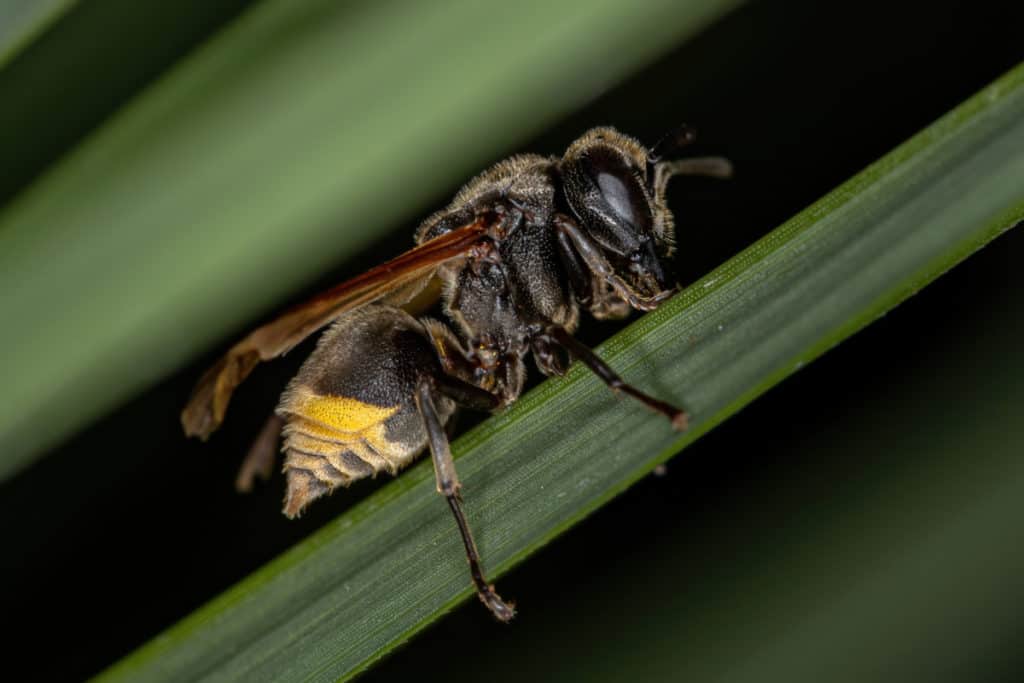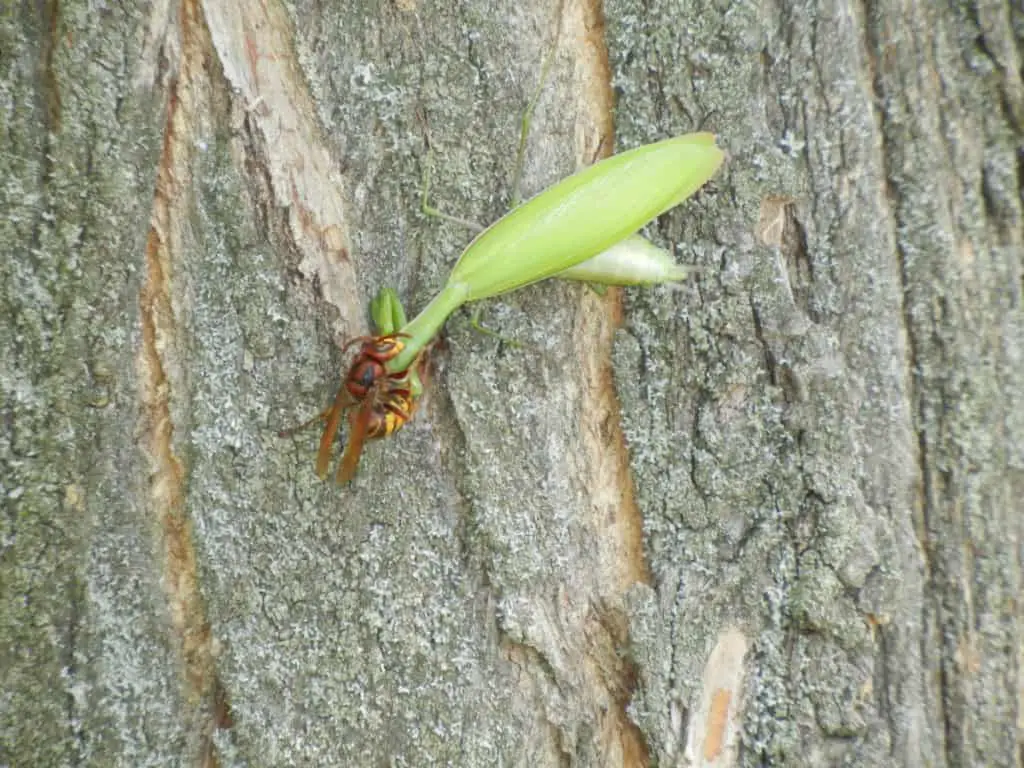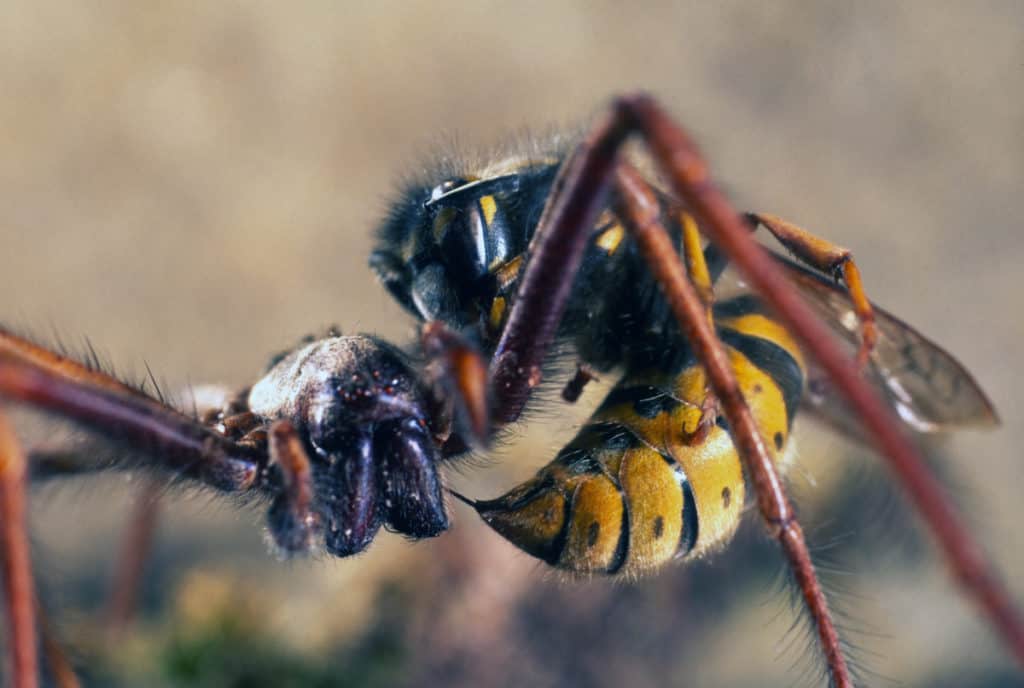Wasps are not the most popular insects around. They are annoying, they can be aggressive and on top of all, they will attack when feeling threatened. Could wasps be protecting not only their nest but a store of honey in their nest?
So, do wasps make honey?
Yes, some wasp species like the Mexican Honey Wasp produce and store honey. However the honey comes in small quantities, and it is only enough for their consumption. Even though most common wasps get a portion of their diet from nectar, they do not process it to honey.
Is the wasp’s honey the same as the honey produced by honeybees? Is it better? Do they store honey for the cold months?
For this and more, continue to read as we expound on the topic.
Wasps That Do Make Honey
While most wasp species consume nectar, they do not take it home or make honey, instead, they use it as an optional energy reserve. There is however an exception to this. Mainly found in South and North America, the Mexican honey wasps go the extra mile to produce and store honey.

They can also be found in South-Eastern Arizona and south of Texas, where the climate is hot. The honey produced by the species is consumed by the larvae and adults within the colony. Due to the low output, it is hard to find enough for packaging or mass production.
Understanding The Mexican Honey Wasps
Mexican honey wasps, also referred to as Brachygastra Mellifica are social wasps in the family of Vespidae. There are 17 species in the Brachygastra genus. Their dark-colored heads and thorax blend exceptionally with the yellow and dark bands on the abdomen.
Their colonies can be massive, housing up to 20,000 wasps, from which about 3000 are queens, unlike honey bee colonies which have one monarch. After three to four years, the colony abandons the nest but is unclear whether the colony dies out or relocates to another place.
Like other social wasps, their homes are paper-like nests that they build on tree canopies and shrubs. They are made by chewing wood fibers and mixing them with salivary excretions and their color ranges from brown to grey depending on the raw material used in construction.
The outer surface resembles a bag-like envelope, and the entrance is situated near the bottom of the bag. Mature nests contain about five pounds of honey.
Apart from their sweet syrup, they are also famed for pollination and control of harmful pests. They are especially beneficial in pollinating citrus and avocado orchards. Unlike many other wasp species, they are not aggressive when left undisturbed and only use their stingers when threatened.
The natives usually cut the bottom of the wasps net, leaving the base still attached to the shrub or tree while harvesting. The wasps rebuild the ruined nest, which allows the harvesters to have another spoil the following year.
Some of the farmers earn the title of “Vespiculturists” by carrying the whole nests when they are still tiny and relocating them to their gardens. While harvesting, they calm the wasp colony with smoke like a beekeeper would before chopping open the nest to get honey, and leaving the poor creatures to rebuild their home.
Only the females have stingers. Their population is immense from July to September.
How Do Wasps Make Honey? Is It The Same Process As Bees?
Both bees and wasps, go through the same process to produce honey, the storing, however, differs between the species. Bees have excellently designed honeycombs to store their sweet product while wasps store it in paper-like nests. To understand how the Mexican honey wasps make the sweet syrup, let us look at how our buzzing friends the honey bees do it.
Honey bees make honey primarily from nectar. Forager bees collect nectar from flowers and store it in a honey stomach called the crop. A bee can visit more than 100 flowers on foraging trips. Once the crop is full, the hardworking insect heads back to the hive where to drop off its payload of nectar.
Back to the beehive, she regurgitates the nectar to the house bees so that they can start the honey-making process as she goes back to collect more nectar. The processing bees then spew it to the honeycombs. They add an enzyme known as invertase every time they regurgitate to the hexagonal wax cells.
The nectar contains sucrose and water. Invertase converts it into two simpler sugars glucose and fructose. The freshly made honey contains too much water to be stored therefore, a dehydration process has to take place. The bees spread their food on the honeycomb which increases the surface area allowing more water evaporation.
Secondly, they fan their wings near the honey to enhance airflow and evaporate more water. Eventually, the water content drops to about 17-20% from 70%. The low water content keeps it from contamination by fungi and bacteria. Finally, the bees cap the honey cells with an airtight wax seal. It stays here until the bees are ready to eat it. It is their stock for the cold winter months. Away from air and water, honey doesn’t spoil.
Why Most Wasps Do Not Make Honey
Wasps have a broad diet, unlike honey bees. The latter get their protein source from pollen in place of insects. Secondly, Wasps in the temperate zone do not overwinter in big colonies as the honey bees do.
Honey bees require food stores to take them through the cold months when the blooming flowers are unavailable. So, they rely on the honey they store in the warm months. Tropical wasps have insects to consume all year round.
For the complete diet of wasps, you might be interested in checking out this article we have written, What Do Wasps Eat?
Is Wasp’s Honey Safe To Eat?
Mexican honey wasps make honey in small quantities for their consumption. It is very similar to that of bees since they use the same nectar from the same flowers as bees do. The flavor of both sources is also similar.
It is consumed in countries like Mexico and Brazil and is considered a delicacy in some Mexican cultures. It is likened to maple syrup.
However, some individual wasps make honey with the Datura plant, which has high proportions of atropine: a chemical substance that can be poisonous to human beings if consumed without proper directives.
Another very interesting relative of the Mexican Honey Wasps is the Vulture Bee. These guys make feed on meat. If you are interested check out the article we have written, Vulture Bees: There Are Meat Eating Bees And They Make Honey
Is Wasps Honey Better Than Bee Honey?
Although wasps honey is edible and tastes somewhat like that of bees, it has lower quantities of pollen hence, lower nutritional value. Apart from the pollen content, analyses of bees’ and wasp’ honey show a minimal difference between the two. The glucose and fructose level is similar to that of honey bees.
The similarities show that these are foraging wasps since honey comes from multiple floral sources like honey bees. However, wasps honey crystallizes more readily than bees honey.
If you are interested in trying different types of exotic honey I highly recommend checking out this article we have written, 13 Honey Varieties You Should Discover
Do Wasps Steal Honey From Bees?
Wasps are known to steal honey from beehives which show inadequacy in their nests. They steal in large quantities if they get access to it. Shockingly, they also prey on bees.
It is quite common to see a wasp cutting a honey bee into two sections and flying away with the abdomen section, leaving the poor creature with the head and thorax fighting for its life. Unlike bees which store food for the winter season, wasps do not store anything.
Common Species Of Wasps: Do They Make Honey Or Just Eat It?
Do Yellowjackets Make Honey Or Just Eat It?
While yellowjackets are a common nuisance at summer picnics, they are welcome guests in the gardens. The bright yellow and black striped beauties are slender compared with honey bees.
You are likely to find them around the foliage other than seeking nectar from flowers in the first half of summer. Yellowjackets supply their young ones with flies, caterpillars, which make up their diet for the better part of summer. They can be overly aggressive when their nest is threatened.
Towards the end of summer, they start foraging for nectar and other sugar sources. Although they feed on nectar from flowers, they do not make or store honey. Surprisingly, they also prey on bees by ambushing them at the hive’s entrance, as they leave or come home.
They quickly tear a bee into two, eat some parts, and carry the rest to the nest. If a bee colony is weak, attacks can lead to a significant problem that can even lead to a hive collapse.
Yellowjackets go by the hand-to-mouth lifestyle and they leave no food stocks for the months of shortage. They are also known to steal honey from beehives as well as the larvae. They can sting severally without losing a sting, unlike the honey bee that dies after stinging.
If you are interested to see how yellowjackets compare to other wasps then check out this article we have written, Wasps Vs Yellowjackets
Do Paper Wasps Make Honey Or Just Eat It?
Paper wasps are usually longer with more slender bodies than yellow jackets. Their nests comprise a single comb without an envelope. Some species love to nest near buildings and frequently come into contact with people. They nest around wall voids, storage buildings, inside garages, attics, and birdhouses. Natural nesting includes shrubs, trees, and cliff overhanging.
Solitary queens from hibernation pioneer the colonies in early spring. After raising the first generation of workers, they take over the nest duties. They usually sting when nests are disturbed. Only the Mexican honey wasp in this family is known to make honey.
Do Hornets Make Honey Or Just Eat It?
Hornets are a type of eusocial wasp, and they are not known to make honey. They are not overly defensive, and their nests can be situated quite close to human activity without being a nuisance. You will only end up as a victim of their painful stings if you provoke them.
Their nests can be quite large even though they are abandoned in the fall when the colony dies out and are not reused. Fertile queens overwinter under tree barks or in cavities and build a new nest in winter in spring.
Like the yellowjackets, hornets feed on nectar, rotting sweet fruits, foodstuffs containing sugar, honey, and insects. Due to their large size and potent venom, they can kill large insects such as locusts, grasshoppers, katydids, and honey bees. The victims are fully masticated and fed to the larvae.

They can grow up to 5.5 cm in length. Their painful stings are more than that of a typical wasp due to venom that contains a large amount of acetylcholine.
If you would like to see how hornets compare to other wasps then you might be interested in this article we have written, Wasps Vs Hornets.
Are There Other Insects That Make Honey?
Yes, some ant species make honey. They also happen to be relatives of wasps and bees and are common nectar foragers. Honeypot ant is the common name that is used to refer to the numerous species of ants with workers that make honey. They do it uniquely; while the honey bees store honey in their hives, the ants collect on nectar in their abdomen.
Their abdomens swell beyond their usual sizes depending on the nectar they have consumed. It can swell up to the size of a grape! These act as food reservoirs for the colony. Back in their nests, they regurgitate the honey from their stomachs to feed their colonies.
The ants not only collect nectar, but they also gather honeydew produced by sap-suckers like aphids and sap leaks on plant stems to make the sweet syrup. The flavor of honeydew honey depends on the host plants that sap-sucking insects are feeding. The ant food is also harvested and consumed by indigenous communities.
Do Wasps Store Food?
Most social wasps do not store food. Some species paralyze insects by stinging them and stock them in nests or burrows where their young ones can consume them.

They do not store food for the winter season since they do not overwinter in big colonies as honey bees do. The latter requires food throughout the winter in the absence of blooming flowers, so they rely on stored honey.
Temperate wasps do not feed during winter. They hibernate as solitary individuals on the underground, house sidings, under loose tree barks, and rebuild new colonies in each spring season.
Others overwinter as dormant pupae like butterflies and moths do and emerge in spring. Some species die out as temperatures drop into winter, and only a solitary queen survives to start a new colony.
Do Wasps Pollinate?
Wasps collect only small amounts of pollen since they do not have hairy bodies like bees. Although they are not regarded as ideal pollinators like the bees, some species are known to be potential and effective pollinators to several plants.
For instance, fig wasps are the only pollinators of fig wasps. Without them, the tasty fruits would be non-existent. The fig plant responds to the favor by providing the wasps with food and shelter. They enjoy a mutual relationship.
Yes, Wasps Are Expert Wine Makers
Wasps are fantastic winemakers by contributing to the yeast level in grapes. The wasps provide an ideal shelter for the saccharomyces cerevisiae fungus, which is used in making bread, beer, and wine.
How does this come to be? As wasps feed on grapes, which are rich in yeast, it is stored in the stomach over the winter, and it is transferred genetically to the offspring. The new generation of wasps passes on the yeast to the next season’s grapes.
The Wrap Up
Honey is mainly associated with bees. Surprisingly, not all bee species make honey, whereas, ants and wasps can also produce honey. That is why the sweet syrup from bees is readily available at your nearest food store why the rest is very scanty.
Most wasp species consume nectar for energy needs. They are a bit more mean and aggressive than bees. While a bee can sting you only once and when provoked, a wasp can sting severally in a row.
If you are interested in different kinds of honey or to know more about honey in general then check the articles below:
What is Jarrah Honey, and Where Can I Get It?
What Is Leatherwood Honey And Where Can I Get It?
What Is Sidr Honey And Where Can I Get It?
Sources
https://www.sciencefocus.com/nature/do-any-wasps-make-honey/
http://texasento.net/Brachygastra.htm
https://www.jstor.org/stable/25085503
https://www.reflectionstexas.com/nature-essays-archive/11112016-mexican-honey-wasps
https://entomologytoday.org/2019/03/28/yellowjackets-opportunistic-raiders-honey-bee-hives/
https://extension.umd.edu/hgic/topics/yellowjackets
https://en.wikipedia.org/wiki/Yellowjacket
https://www.threeforagers.ca/blog/2019/honey-bees-arent-the-only-insects-that-make-honey
